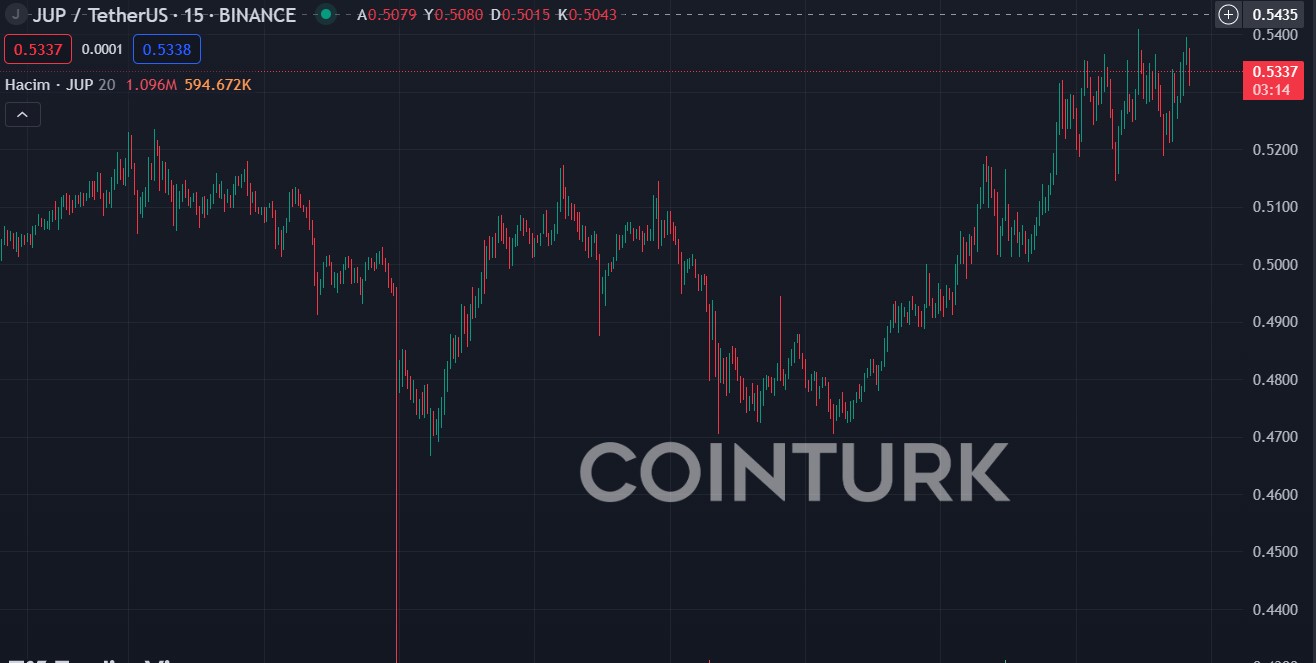Solana-based liquidity provider Jupiter (JUP) has been making headlines since its launch earlier this month, with a significant price drop of over 60% since the listing day following JUP token’s airdrop. Despite the decline, Jupiter anticipates a reversal of the downward trend, suggesting limited downside.
Resistance Levels for JUP
Following market volatility, the cryptocurrency Jupiter (JUP) saw an 8% price increase in the last 24 hours. Additionally, a 62% surge in trading volumes could signal a strong upward rebound. Currently, Jupiter (JUP) is showing volatility within the range of $0.461 to $0.578, reflecting the general trends of the cryptocurrency market. The 10-day moving average is slightly below the 50-day moving average of $0.514, at $0.491, which could indicate a moderate short-term uptrend.
While the fundamental support levels are at $0.3 and $0.416, resistance levels are noted at $0.649 and $0.765. This could outline a broad trading range that investors are closely monitoring for potential breakout or consolidation signals. Some analysts believe that JUP could soon reach its listing price of $1.29, which would mean nearly a 200% gain from the current level.

Developments in Jupiter
The recent increase in JUP’s price can largely be attributed to the Jupiter Working Groups (JWG) initiative launched by the Jupiter founder. This initiative aims to revitalize the Jupiter ecosystem by fostering collaboration between a dedicated community and experienced DAO professionals, and by generating new ideas.
The launch of JWGs could indicate a dynamic period for the Jupiter (JUP) ecosystem. It is also expected to catalyze innovation and establish a solid foundation for sustainable growth. By encouraging community participation in both JWGs and the broader Jupiter (JUP) network, the project could be better equipped to overcome challenges posed by volatile market conditions.

 Türkçe
Türkçe Español
Español









